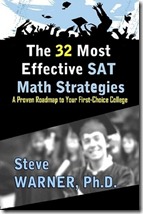1. Attendance is key to success. Each year I graph final exam grades against student attendance. The correlation is amazing – and unsurprising.
2. Students should choose higher level classes. Not only will they be challenged more often and in more meaningful ways, they’ll also enjoy a learning environment with more focused peers.
3. Teachers appreciate parent feedback. We’re teachers because we love kids, and you know your kids better than anyone. Let us know what’s working, and it will encourage us to foster those activities and topics.
4. Students are not all treated the same. Teachers realize kids are different, and it’s our job to help each individual grow to their potential. This may require varying assignments, strategies, goals, and expectations. Fair is not always equal.
 5. Busy students tend to be the happiest and most successful. Johnny takes a full course load, music lessons, plays two sports, is active on Student Council, and receives high marks. Rob isn’t taking any electives, has three study halls, leaves school immediately at 3 pm each day, yet doesn’t turn in homework and falls behind. Guess which student is always smiling?
5. Busy students tend to be the happiest and most successful. Johnny takes a full course load, music lessons, plays two sports, is active on Student Council, and receives high marks. Rob isn’t taking any electives, has three study halls, leaves school immediately at 3 pm each day, yet doesn’t turn in homework and falls behind. Guess which student is always smiling?
6. Cell phones should not be used during the school day, regardless of what your child tells you. In an emergency, call the school office.
7. Computer access is a requirement in today’s high-tech world. But it’s not an excuse… there are many opportunities for those who don’t have access at home, including the school itself, friends, libraries, etc.
8. Don’t be afraid to contact a teacher if you have a concern. Teachers and parents all want what’s best for their kids, so team up to see what can be done to provide the richest opportunities and experiences possible!
9. If you receive a call from a teacher about an issue with your child, please take it seriously. Teachers hate making the call as much as you hate receiving it, and the goal of the call is to work with you to resolve the concern. Teachers call because they care.
 10. There is great power in dinner conversations. Ask your kids what they’re doing in their classes, but don’t be afraid to push past the blow-off responses. Follow up with questions about why, how, and what they are interested in.
10. There is great power in dinner conversations. Ask your kids what they’re doing in their classes, but don’t be afraid to push past the blow-off responses. Follow up with questions about why, how, and what they are interested in.

